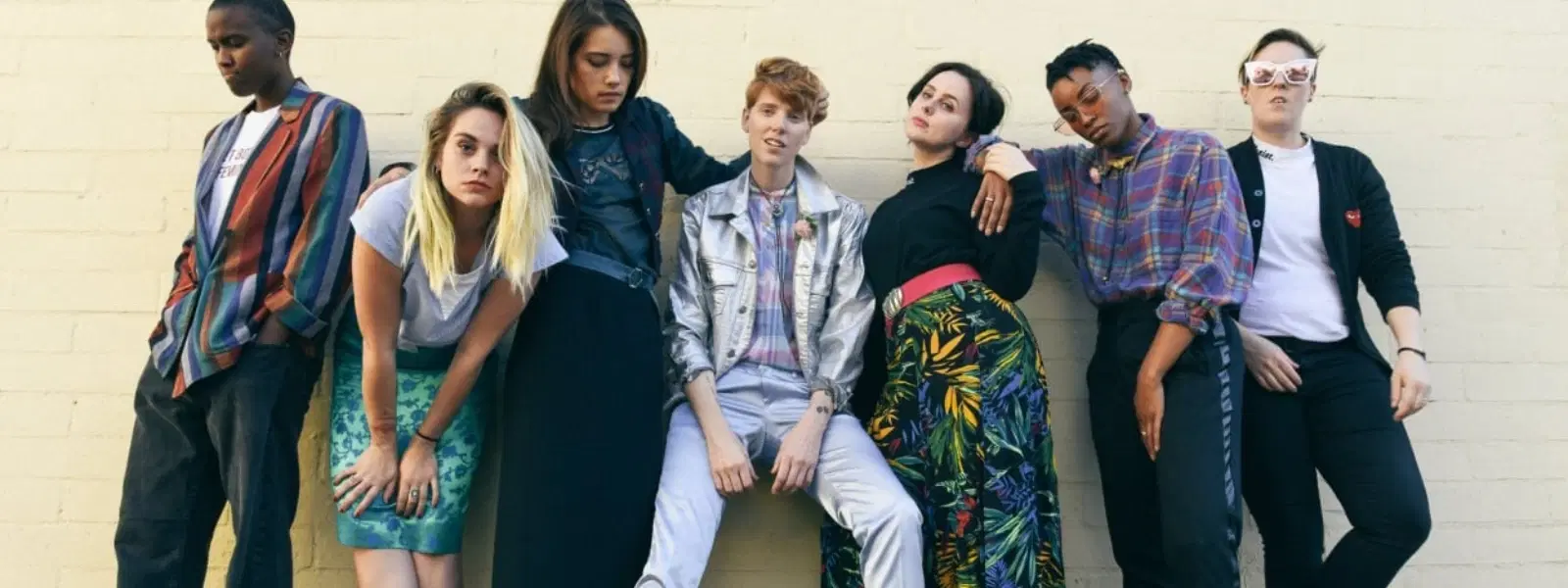
Apparel & Accessories
•03 min read
-68be3552-55c1-4572-9cbe-6f32de66a775.png&w=3840&q=75)
Fashion has always been a tool for self-expression and identity, and today's style landscape is evolving with the rise of gender neutral fashion trends. In this blog post, we explore the roots of this dynamic movement, understand the growing popularity of unisex clothing styles, and offer practical tips to build a neutral wardrobe that reflects individuality and inclusivity.
Gender neutral fashion has roots that stretch back to the early 20th century, when women embraced trousers during wartime and later, the liberated styles of the 1960s carried the idea forward. Over time, this design philosophy evolved, and in the late 2010s, the industry saw a surge in genderless apparel influenced by movements prioritizing inclusivity and self-expression. Designers began experimenting with androgynous silhouettes and neutral color palettes, laying the foundation for minimalist gender-neutral outfits.
The momentum behind this trend stems from a broader cultural awareness of gender fluidity and non-binary clothing. Millennials and Gen Z consumers champion unisex clothing styles that allow each person to embrace individuality over traditional norms. With social media amplifying diverse expressions of style, fluid fashion trends have become a vital part of modern wardrobes, opening up conversations about self-expression and redefining what it means to dress for oneself.
Gender neutral fashion is marked by its focus on versatility and comfort. Designers use oversized cuts, tailored fits, and neutral tones to create pieces that work for all genders. These designs often include timeless basics such as denim jackets, structured blazers, and relaxed trousers, which help build an inclusive wardrobe that suits every lifestyle. The trend encourages layering and mixing essentials, so whether you favor minimalist gender-neutral outfits or more eclectic combinations, there is something for everyone.
Creating a gender neutral wardrobe revolves around key building blocks. Neutral wardrobe essentials like monochromatic tees, structured outerwear, and versatile accessories for all genders are indispensable for a modern closet. Fabrics like linen, cotton, and sustainable blends are chosen not only for durability but also for their ability to adapt effortlessly to various styles. These pieces serve as anchors in an outfit, easily transitioning from a relaxed day look to more sophisticated settings.
-961388ae-2e6f-4656-ab76-3780ab6a42c4.png&w=3840&q=75)
The movement towards inclusivity is being embraced by a wave of fashion brands determined to champion gender neutral collections. These brands are redefining style by integrating elements such as ungendered streetwear and fluid fashion trends into their designs. With a focus on ethical production and sustainability, both well-established and emerging players are reshaping the narrative by highlighting the importance of self-expression and celebrating diversity in style. Each collection aims to provide customers with aspirational yet accessible choices that mirror a commitment to freshness and on-trend fashion.
Despite its popularity, gender neutral fashion continues to face challenges. Issues such as inconsistent sizing and limited mass-market representation persist. The industry is working to overcome these hurdles through collaboration across all levels—from designers to manufacturers—to ensure that the inclusive spirit is maintained. Advances in technology and data-driven design are paving the way for future innovations that make gender neutral fashion more accessible across diverse demographics.
To embrace androgynous fashion, start with key layering pieces such as structured blazers, oversized coats, and relaxed-fit trousers. Incorporate neutral colors like beige, black, gray, and white to create a timeless aesthetic. Pair these basics with versatile accessories for all genders—think scarves, backpacks, or stylish sneakers—to elevate your outfit. This approach not only enhances comfort but also reinforces a style that is truly personal and adaptable to any occasion.
Fluid fashion trends empower you to experiment with pattern mixing and creative pairings. Bold prints or subtle patterns can breathe life into a neutral wardrobe, while repurposing traditional clothing items, such as combining tailored suits with casual tees, adds a unique twist to your style. By exploring these innovative combinations, you can effortlessly build a wardrobe that is as versatile as it is expressive, complementing any lifestyle or aesthetic preference.
Insight Corner: The Cultural Impact of Gender-Neutral Fashion
Gender neutral fashion is more than a trend—it is a cultural movement that encourages self-expression while challenging long-standing societal norms. This shift in perspective not only inspires individual style choices but also fosters a more inclusive community that values authenticity and responsible fashion.
-b4b0ee01-7102-4782-b4cc-72450eaeb58c.png&w=3840&q=75)
Gender-neutral fashion is often referred to as unisex clothing, genderless apparel, or androgynous fashion.
This trend reflects a cultural shift towards inclusivity and a growing awareness of gender fluidity, driven by newer generations who value self-expression and authenticity.
Examples include oversized blazers, relaxed-fit trousers, monochromatic tees, and versatile accessories that suit all genders.
While its roots trace back to the early 20th century, the concept gained significant traction in the late 2010s as conversations around gender inclusivity expanded.
Gender neutral fashion is reshaping the apparel and accessories landscape by challenging traditional norms and celebrating individual expression. From unisex clothing styles to versatile accessories for all genders, this movement embraces diversity and innovation. As the trend continues to advance, it offers an aspirational brand experience, merging curated collections with the values of sustainability and responsible fashion. The evolution of gender-neutral trends invites everyone to explore a more fluid, creative approach to dressing that honors uniqueness and contemporary style.